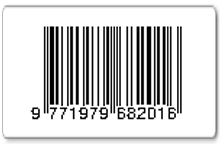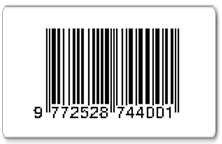PENGARUH OPINI AUDITOR, AUDIT FEE, UKURAN KAP DAN UKURAN PERUSAHAAN KLIEN TERHADAP LOYALITAS KLIEN (Studi pada Perusahaan Manufaktur yang Listing di BEI)
Abstract
Abstract
The purpose of this research to know whether variable opinion auditors, audit fee, size of public accounting and size of the company affect loyality clients on manufacturing enterprises listing in the indonesia stock exchange. Client loyalty is an interesting topic of concern in this study to serve as a dependent variable. Loyalty is faithfulness counts for Clients and client trust against Auditors that always using the same auditor services up to the regulation set out the Government's auditor, where the 3 years when the client uses the same auditor is constantly in the regulation which established the Government then the client is considered loyal to the auditor, otherwise, once in 3 years the client has changed the auditor then the client is deemed not loyal to the auditor. Where as the opinion of the auditor, audit fee, size of public accounting and size of the company to be the deciding factor of the client loyalty which in this case being the independent variable. Processing and data analysis in this study uses the binary logistic regression in SPSS 20. Research object by 40 manufacturing companies listed in the Indonesia stock exchange (idx) with a period of 3 years in a row listings. Overall results are 2 independent variable influence significant positive and two other variables not affecting because there is another factor bigger influence. The results showed the auditor's opinion variables and the size of public accounting firm of the influential positf significantly to the loyalty of clients, while the other two variables, namely auditing fee was not significant positive effect on the client loyalty and company's size effect insignificant negative against the loyalty of clients.
Keyword: Client Loyalty, auditor opinion, audit fee, size of public accounting and size of company.
Abstrak
Tujuan penelitian ini untuk mengetahui apakah variabel opini auditor, biaya audit, ukuran akuntan publik dan ukuran perusahaan mempengaruhi loyalitas klien pada perusahaan manufaktur yang listing di bursa efek indonesia. Loyalitas klien adalah topik yang menarik perhatian dalam penelitian ini untuk melayani sebagai variabel dependen. Loyalitas adalah kesetiaan yang dihitung untuk Klien dan kepercayaan klien terhadap Auditor yang selalu menggunakan jasa auditor yang sama sampai dengan peraturan yang ditetapkan oleh auditor Pemerintah, di mana 3 tahun ketika klien menggunakan auditor yang sama secara konstan dalam peraturan yang menetapkan Pemerintah kemudian klien dianggap loyal kepada auditor, jika tidak, sekali dalam 3 tahun klien telah mengubah auditor maka klien dianggap tidak loyal kepada auditor. Sedangkan pendapat auditor, biaya audit, ukuran akuntan publik dan ukuran perusahaan menjadi faktor penentu loyalitas klien yang dalam hal ini menjadi variabel independen. Pengolahan dan analisis data dalam penelitian ini menggunakan regresi logistik biner pada SPSS 20. Objek penelitian oleh 40 perusahaan manufaktur yang terdaftar di bursa efek Indonesia (idx) dengan jangka waktu 3 tahun berturut-turut listing. Hasil keseluruhan adalah 2 variabel independen yang berpengaruh positif signifikan dan dua variabel lainnya tidak berpengaruh karena ada faktor lain yang lebih besar pengaruhnya. Hasil penelitian menunjukkan variabel opini auditor dan ukuran perusahaan akuntan publik dari positf berpengaruh secara signifikan terhadap loyalitas klien, sedangkan dua variabel lainnya, yaitu biaya audit tidak berpengaruh positif signifikan terhadap loyalitas klien dan ukuran perusahaan berpengaruh tidak signifikan terhadap kesetiaan klien.
Kata Kunci: Loyalitas Klien, opini auditor, biaya audit, ukuran akuntan publik dan ukuran perusahaan.
Full Text:
PDFReferences
AICPA (1983), Audit Risk and Materiality in Conducting an Audit, Statement on Auditing Standards No. 47, American Institute of Certified Public Accountants, New York, NY.
AICPA (1983), Audit Risk and Materiality in Conducting an Audit, Statement on Auditing Standards No. 47, American Institute of Certified Public Accountants, New York, NY.
Bell, T.B., Bedard, J.C., Johnstone, K.M. and Smith, E.F. (2002), “RiskSM: a computerized decision aid for client acceptance and continuance risk assessments”, Auditing: A Journal of Practice & Theory, Vol. 21, pp. 97-113.
Bockus, K. and Gigler, F. (1998), “A theory of auditor resignation”, Journal of Accounting Research, Vol. 36, pp. 191-208.
Cenker, W.J. and Nagy, A.L. (2008), “Auditor resignations and auditor industry specialization”, Accounting Horizons, Vol. 22 No. 3, pp. 279-95.
Chi, W. dan H. Huang. n.d. Discretionary Accruals, Audit-Firm Tenure and Auditor Tenure: An Empirical Test in Taiwan. Department of Accounting National Taiwan University.
Chow, C.W. dan S.J. Rice. 1982. “Qualified Audit Opinions and Auditor Switching”. The Accounting Review, Vol. LVII, No. 2, pp. 326-335.
DeAngelo, L.E. (1981), “Auditor size and audit quality”, Journal of Accounting a Vol. 3, pp. 183-99.
Defond, M.L. and Francis, J.R. (2005), “Audit research after Sarbanes-Oxley”, Auditing: A Journal of Practice & Theory, Vol. 24, pp. 5-30.
DeFond, M.L. and Subramanyam, K.R. (1998), “Auditor changes and discretionary accruals”, Journal of Accounting and Economics, Vol. 25, pp. 35-67.
Dyers, J.C, and A.J. Mc Hugh, 1975. “The Timeliness of the Australian Annual Report ”.Journal of Accounting Research. Autumn, p.204-219.
Ebrahim, A. (2010), “Audit fee premium and auditor change: the effect of Sarbanes-Oxley Act”, Managerial Auditing Journal, Vol. 25 No. 2, pp. 102-21.
Ettredge, M., Li, C. and Sun, L. (2006), “The impact of SOX section 404 internal control quality assessment on audit delay in the SOX era”, Auditing: A Journal of Practice & Theory, Vol. 25 No. 2, pp. 1-23.
Ettredge, M., Li, C. and Scholz, S. (2007), “Audit fees and auditor dismissals in the Sarbanes-Oxley era”, Accounting Horizons, Vol. 21 No. 4, pp. 371-86.
Ettredge, M., Heintz, J., Li, C. and Scholz, S. (2007), “Auditor realignments accompanying implementation of SOX 404 reporting requirements”, working paper, University of Kansas, Lawrence, KS (http://www.geogle.com diakses 29 Desember 2011).
Fama, E. F. dan M. C. Jensen. 1983. “Separation of Ownership and Control”. Journal of Law and Economics, p. 327-349.
Farag, Magdy dan Elias, Rafik. 2011. “Relative audit fees and client loyalty in the audit market”. Accounting Research Journal, Vol. 24 Iss: 1 pp. 79 – 93
Grothe, M. and Weirich, T.R. 2007, “Analyzing auditor changes: lack of disclosure hinders accountability to investors”, The CPA Journal, Vol. 77 No. 12, pp. 14-23.
Ghozali, Imam. 2011, “Aplikasi Analisis Multivariate Dengan Program IBM SPSS 19, Edisi 5. . Semarang: Badan Penerbit Universitas Diponogero
Huang, H.W., Raghunandan, K. and Rama, D. 2009, “Audit fees for initial audit engagement before and after SOX”, Auditing: A Journal of Practice & Theory, Vol. 28 No. 1, pp. 171-90.
Menteri Keuangan, 2002, Keputusan Menteri Keuangan Nomor 423/KMK.06/2002 tentang “Jasa Akuntan Publik”, Jakarta.
Menteri Keuangan, 2008, Peraturan Menteri Keuangan Nomor 17/PMK.01/2008 tentang “Jasa Akuntan Publik”, Jakarta.
Pamudji, Sugeng. 2008. “Pengaruh kualitas audit dan auditor baru serta pengalaman bagian akuntansi terhadap kepuasan dan loyalitas klien”. Universitas Diponegoro : Semarang. (http://google.com, diakses September 2013.
Petronila, Thio Anastasia. 2006. “Analisis skala perusahaan, opini audit dan umur perusahaan atas audit delay”. Fakultas ekonomi Unika Atma Jaya : Jakarta. (http://google.com, diakses 20 november 2012)
Setyorini. 2010. “Persepsi loyalitas klien terhadap kantor akuntan publik”. (http://google.com, diakses 28 Februari 2013).
Situs resmi BEI, Laporan Keuangan Tahunan Perusahaan Manufaktur Di Indonesia (http://idx.co.id, diakses 15-17 Desember 2013).
Sudarmadji, Sularto. 2007. “Pengaruh Ukuran Perusahaan, Profitabilitas, Leverage, dan Tipe Kepemilikan Perusahaan terhadap Luas Voluntary Disclousure Laporan Keuangan Tahunan”.Vol.2. Universitas Gunadarma (http://google.com, diakses Maret 2014).Zaid, Omar Abdullah dan Anne Abraham. 1994. Communication Skills in Accounting Education: Percepsion of Academics, Employers and Graduates Accountant. Accounting Education, Vol. 3 No. 3 Hal. 205-221.
Wandabio, Sensi. L. 2006 “Evaluasi Manajemen Risiko Kantor Akuntan Publik Dalam Keputusan Penerimaan Klien (Client Accetance Decisions Berdasarkan Pertimbangan Dari Resiko Klien (Client Risk), Resiko Audit (Audit Risk) dan Resiko Bisnis KAP” (Auditor’s Business Risk)” (http://ui.ac.id, diakses 20 November 2013).
Wijaya, R. M Aloysius Pangky, “Faktor-faktor yang mempengaruhi pergantian auditor oleh klien”. Universitas Brawijaya : Surabaya. (http://google.com, diakses November 2013).
DOI: http://dx.doi.org/10.35448/jrat.v9i2.4307
Refbacks
- There are currently no refbacks.
pISSN 1979-682X eISSN 2528-7443
Jurnal Riset Akuntasi Terpadu (JRAT) is licensed under a Creative Commons Attribution 4.0 International License







